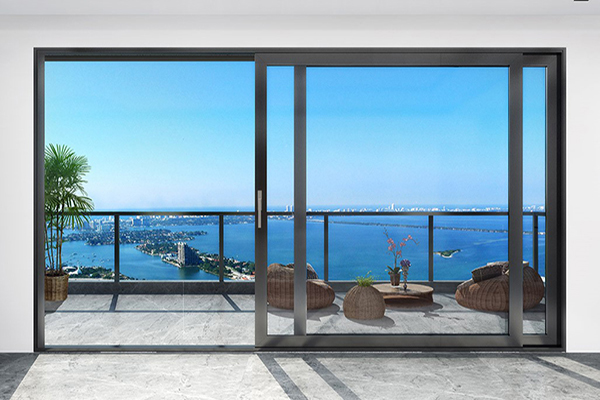The Ultimate Guide to Maintaining Aluminum Windows for Longevity
Aluminum windows are a popular choice for homeowners and builders due to their durability, sleek design, and resistance to environmental wear. However, like any part of your home, they require regular maintenance to ensure they remain functional and aesthetically pleasing for decades. This guide focuses on simple cleaning tips and corrosion prevention strategies to maximize the lifespan of your aluminum windows.
Why Maintain Aluminum Windows?
Aluminum is naturally resistant to rust, but it’s not impervious to damage. Over time, exposure to moisture, pollutants, and harsh weather can lead to corrosion, discoloration, or pitting. Neglecting maintenance can also cause dirt buildup, sticky window tracks, or damaged seals, compromising both appearance and performance. Regular care preserves the windows’ smooth operation, energy efficiency, and modern look, while preventing costly repairs or replacements.

Simple Cleaning Tips for Aluminum Windows
Keeping aluminum windows clean is the cornerstone of maintenance. Regular cleaning removes dirt, grime, and corrosive substances that can degrade the metal or glass over time. Here’s a step-by-step guide to effective cleaning:
1. Gather Your Supplies
Mild dish soap or a non-abrasive cleaner (avoid acidic or alkaline cleaners like vinegar or ammonia)
Warm water
Soft microfiber cloths or sponges
A bucket
A soft-bristled brush for tracks
A hose with a gentle spray nozzle (optional)
A squeegee for glass
Lubricant (silicone-based or WD-40) for moving parts
2. Clean the Frames of Aluminum Windows
Mix a cleaning solution: Combine a few drops of mild dish soap with warm water in a bucket.
Wipe down the frames: Dip a microfiber cloth or sponge into the solution and gently scrub the aluminum frames. Focus on areas with visible dirt or stains.
Rinse thoroughly: Use a hose with a gentle spray or a clean, damp cloth to remove soap residue. Soap left on the surface can attract dirt.
Dry the frames: Use a dry microfiber cloth to prevent water spots or streaks. Drying also reduces the risk of corrosion in humid climates.
3. Clean the Glass of Aluminum Windows
Apply the solution: Use the same soapy water to clean the glass, or opt for a commercial glass cleaner if preferred.
Scrub gently: Use a soft cloth or sponge to avoid scratching the glass. For stubborn spots, let the solution sit for a minute before wiping.
Squeegee for a streak-free finish: Run a squeegee from top to bottom in a single motion, wiping the blade after each pass. Follow up with a microfiber cloth for edges.
Dry the edges: Ensure no water seeps into the frame-glass seal, as this can promote corrosion.
4. Clear the Tracks and Moving Parts of Aluminum Windows
Brush out debris: Use a soft-bristled brush or vacuum with a brush attachment to remove dust, dirt, or small particles from window tracks.
Wipe clean: Use a damp cloth with the soapy solution to clean the tracks thoroughly.
Lubricate moving parts: Apply a silicone-based lubricant to tracks, hinges, and rollers to ensure smooth operation. Avoid over-lubricating, as excess can attract dirt.
5. Frequency
Clean your windows every 3–6 months, depending on your environment. Coastal areas or regions with high pollution may require monthly cleaning to prevent salt or grime buildup.
Spot-clean after storms or heavy pollen seasons to remove debris promptly.
Corrosion Prevention for Aluminum Windows
Corrosion, particularly pitting or galvanic corrosion, is a primary concern for aluminum windows. While aluminum forms a natural oxide layer that resists rust, this layer can break down under certain conditions. Here’s how to prevent corrosion and extend your windows’ lifespan:
1. Protect Against Moisture of Aluminum Windows
Check seals and weatherstripping: Inspect the seals around the glass and frame annually. Replace worn or cracked weatherstripping to prevent water infiltration, which can trigger corrosion.
Ensure proper drainage: Clear weep holes (small drainage openings at the bottom of the frame) of debris. Clogged weep holes can trap water, leading to corrosion or mold.
Apply a protective coating: Consider applying a wax-based polish or a specialized aluminum sealant every 1–2 years. These coatings create a barrier against moisture and pollutants.
2. Avoid Contact with Dissimilar Metals
Galvanic corrosion occurs when aluminum comes into contact with metals like copper or steel in the presence of moisture. For example, using steel screws or brackets can accelerate corrosion.
Use compatible materials: Ensure all hardware (screws, brackets, or hinges) is made of aluminum, stainless steel, or coated to prevent galvanic reactions.
Inspect regularly: Check for signs of corrosion near metal joints and replace incompatible components promptly.
3. Minimize Exposure to Corrosive Substances
Rinse off salt and pollutants: In coastal areas, salt spray can erode the aluminum’s protective oxide layer. Rinse windows with fresh water after storms or regularly if near the ocean.
Avoid harsh chemicals: Cleaners containing ammonia, bleach, or acids can strip the oxide layer, making aluminum vulnerable. Stick to pH-neutral cleaners.
Protect during construction or renovation: If painting or plastering near windows, cover them to prevent splatter from corrosive materials like lime or cement.
4. Address Scratches and Damage
Scratches or chips in the aluminum’s powder coating expose the metal to corrosion.
Touch up minor damage: Use a matching touch-up paint or aluminum primer to seal scratches. Sand the area lightly, clean it, and apply the coating in thin layers.
Consult a professional for major damage: Deep scratches or widespread pitting may require refinishing or replacement.
5. Environmental Considerations
In humid or industrial areas, corrosion risks are higher due to moisture or airborne pollutants. Increase cleaning frequency and inspect for early signs of corrosion, such as white powdery deposits or pitting.
Install window awnings or overhangs to shield windows from direct rain and sun exposure, reducing wear on the aluminum.
Additional Maintenance Tips
Inspect hardware: Tighten loose screws and replace damaged hinges or locks to maintain functionality.
Check for condensation: Persistent condensation between double-glazed panes indicates a failed seal. Contact a professional to repair or replace the unit.
Polish for aesthetics: For a showroom shine, use a non-abrasive metal polish sparingly on frames. Test on a small area first to ensure compatibility with the finish.
Conclusion
Maintaining aluminum windows doesn’t require complex tools or expertise—just consistent care and attention. By following these simple cleaning tips and corrosion prevention strategies, you can keep your windows looking pristine and performing flawlessly for years. Regular cleaning removes harmful debris, while proactive measures like sealing, rinsing, and inspecting protect against corrosion. Invest a little time in maintenance today, and your aluminum windows will reward you with lasting beauty and durability.
Welcome to choose the Aluminum Windows of Liaoning Etaifeng Windoor Co.,Ltd.
Join Our Network Today!
Let’s build the future of architecture together. Our excess production capacity means faster lead times and competitive pricing, giving you an edge in your market. Become a distributor or agent with Liaoning Etaifeng Windoor Co.,Ltd and unlock access to premium aluminum windows, free design support, and exclusive sample corners.
Contact us
david@e-tfeng.com
www.e-tfeng.com
to explore partnership opportunities and start delivering world-class solutions to your clients.










